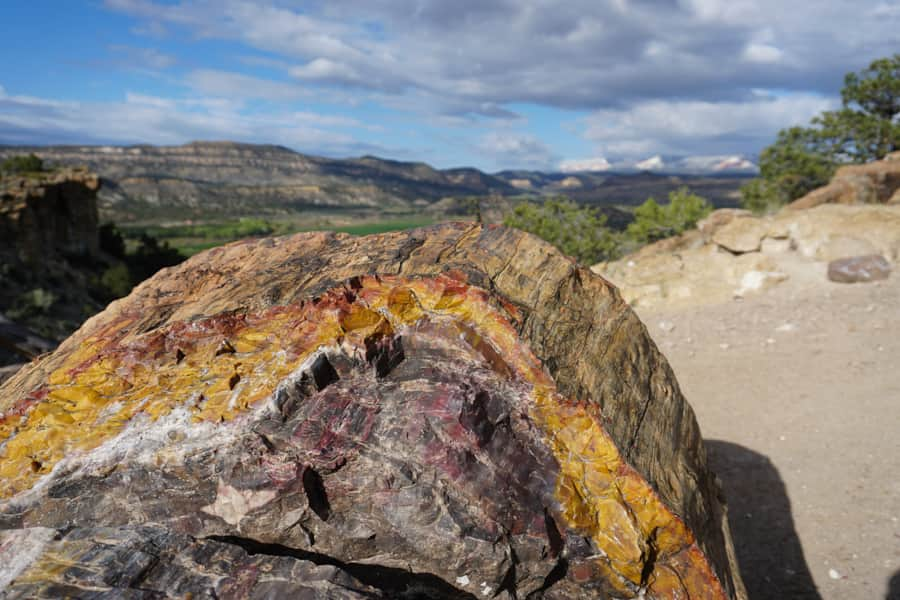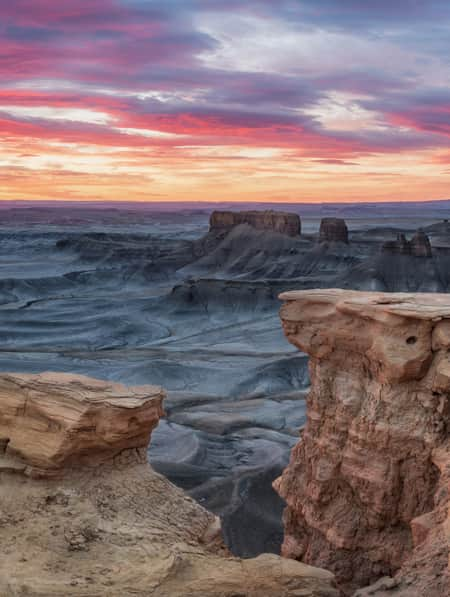How Does Wood Petrify?
Wood petrification happens underground when water-saturated sediment or volcanic ash buries the wood. The water reduces oxygen levels, which slows decomposition by bacteria or fungi. Mineral-filled water flows through deposits, where minerals over millions of years slowly replace the plant’s cell walls.
For wood to petrify, the following factors must be in place:
- Absence of oxygen: The lack of oxygen slows wood’s decay, which allows minerals to replace cell walls and fill void spaces in the wood.
- Presence of silica-rich liquids: Silica is a naturally existing compound in organic and inorganic materials. Glass, beach sand, granite and silicone are all silica materials. When wood soaks up silica-rich fluids, it crystalizes as solid minerals.
- High pressure over time: When ash, mud or sand buries wood for centuries, the high-pressure environment allows inorganic compounds to replace organic plant material.
What Is It Made From?
The minerals that typically fill in cavities to create petrified wood include quartz, chalcedony, agate and opal.
- Quartz: Hard, crystalline mineral made of silica.
- Chalcedony: Cryptocrystalline form of silica composed of extremely fine intergrowth of quartz and moganite.
- Agate: Translucent, microcrystalline variety of quartz.
- Opal: Hydrated amorphous form of silica.

Petrified wood seen at Escalante Petrified Forest State Park.

Petrified wood does not have a strict classification system. It is typically identified based on color and mineral composition.

Depending on their oxidation state, trace metals, particularly iron, can produce a range of hues in petrified wood.

Escalante Petrified Forest State Park
The Escalante Petrified Forest State Park is located at Wide Hollow Reservoir. This small reservoir is popular for boating, canoeing, and fishing.











